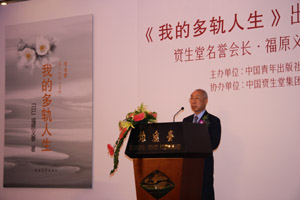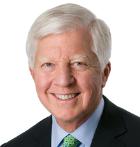Greetings from Williamsburg, Va., an outpost on the new frontier called the experience economy. Well, maybe not so new. John D. Rockefeller Jr., the only son of Senior, who was, of course, the founder of Standard Oil and an iconic figure in the rise of the unfettered industrial economy, began buying up this sleepy Tidewater town in the 1920s. Junior’s vision: Create a living museum that would protect the heritage of the United States and transport everyone who paid the price of admission back to the revolutionary 1770s to experience colonial life, right down to the horse manure.
Colonial Williamsburg, the restored capital of England’s Virginia colony, has attracted tens of millions of visitors since then, including long-reigning Queen Elizabeth II, who visited her ancestral fiefdom first in 1957 and again, 50 years later, in 2007. It also spawned an entirely new local economy based on feeding, lodging, and entertaining all those visitors and providing housing and services for people who found jobs there, as well as for former tourists who decided, as I did, that it would be a nice place to live. The entire greater Williamsburg area is a testament to the transformative power of a compelling customer experience.
Experience Unbound
No one connected what was going on in Williamsburg to a new kind of economy until 1998, when an advance excerpt from a groundbreaking book by B. Joseph Pine II and James H. Gilmore, The Experience Economy: Work Is Theatre and Every Business a Stage, appeared in the Harvard Business Review. The authors called attention to the fact that certain highly successful businesses, such as the Walt Disney Company’s theme parks, REI’s outdoor stores, and Chuck E. Cheese’s pizza restaurants, were delivering something more than products and services. They were delivering engaging and memorable experiences, which attracted droves of customers.
Before Pine and Gilmore, and a few other experience pioneers whom we will soon discuss, the delivery of superlative experiences was mainly seen as something that a service company did, and it was usually called “service excellence” or “service quality” (think Nordstrom or Southwest Airlines). But Pine and Gilmore effectively decoupled the experience from the service, and thus illuminated the fact that the creation of customer experiences was not limited to service companies or the service function per se.
“Manufacturers must explicitly design their goods to enhance the user’s experience as well — essentially experientializing the goods,” they wrote. “Automakers do this when they focus on enhancing the driving experience. But what could a valve manufacturer do to improve the pumping experience, a furniture producer the sitting experience, a publisher the reading experience?... Any good can be inged.”
From there, the two authors, who cofounded the consulting firm Strategic Horizons LLP, took an even more ambitious leap and declared that experiences weren’t just a way to add value to customer offerings — they were the basis for an entirely new economic era. As the agrarian economy had given way to the industrial economy and the industrial economy to the service economy, now the service economy was morphing into the experience economy. The key question for companies seeking to successfully position themselves in such an economy: What would we do differently if we charged admission?
More than a decade after the book’s publication, Pine and Gilmore are more convinced than ever that customer experience is the basis of a new economy. At their annual “thinkAbout” conference in 2009, they issued a manifesto titled “Economic Sense” that touted customer experience as nothing less than the solution to the U.S. economy’s recessionary doldrums. In an era in which products and services are increasingly automated and jobs are disappearing or being offshored, they wrote, “experiences require increased human capital in their initial conception, comprehensive design, venue placement, and everyday staging.... A prosperous economic future requires the dawn of a new economic era based on experiences.”
Pine and Gilmore created a wave of interest in customer experience that continues to build. Their book still sells 10,000 or so copies annually, according to Gilmore. (Most business books don’t sell that well in their first year, let alone a decade later.) And although the authors were not the originators of the concept of customer experience, their work has inspired a number of other thinkers. Most of these acolytes, however, are focused more on the potential profits that companies can reap when they enhance their customers’ experiences than on building an economy.
A Marketing Advantage
The idea that customer experience might be worth considering on its own merits originated in marketing. It was articulated by Morris B. Holbrook and Elizabeth C. Hirschman in “The Experiential Aspects of Consumption: Consumer Fantasies, Feelings, and Fun,” a paper published in the Journal of Consumer Research in September 1982 that is often cited as the urtext. In the same way that behavioral economists brought new insights to a field that had grown staid and sterile, the two marketing professors picked up threads of research from disciplines such as psychology and biology and applied them in a fresh way to consumer behavior, which had previously been seen as rational and logical, at least in theory.
In contrast to the traditional view, experiential consumption was governed by the pleasure principle. “This type of consumption,” the authors wrote, “seeks fun, amusement, fantasy, arousal, sensory stimulation, and enjoyment.” This approach was quite appealing to marketers who were looking for ways to cope with the price pressures created by the double-dip recession of the early 1980s.
This line of thought was most fully applied to marketing by Bernd H. Schmitt, a colleague of Holbrook’s at Columbia University’s Graduate School of Business and author of Experiential Marketing: How to Get Customers to Sense, Feel, Think, Act, and Relate to Your Company and Brands. In the book, Schmitt echoed Peter Drucker (who paved the way for marketing’s ascendancy when he said, “There is only one valid definition of business purpose: to create a customer”), writing, “Similarly, there is only one valid definition of the purpose of marketing: to create a valuable customer experience.”
Schmitt offered a jargon-rich framework for experiential marketing, saying that marketers could more effectively influence consumers by crafting messages based on five “SEMs” (strategic experiential modules, or types of experiences that correspond to the ways that people interact with the world — sense, feel, think, act, and relate) and delivering them via “ExPros” (experience providers, a category that includes standard marketing vehicles, such as advertising, logos, packaging, and so on).
The most powerful marketing, according to Schmitt, combines SEMs in integrated or holistic experiences. As an example, he pointed to the successful reintroduction of Volkswagen AG’s Beetle in the 1990s in North America, where it helped rescue the German automaker, which had gone from selling 500,000 cars in 1970 to selling fewer than 200,000 in 1988. The new Beetle tapped the sense SEM with its distinctive circular shapes, the feel SEM by eliciting smiles and nostalgia, and the think SEM with ads that asked, “0–60?” and answered, “Yes.” It also tapped the act SEM by suggesting the car would enable customers to inject more fun into their lives and the relate SEM by equating the car with hippies and flower power.
Get a Clue
While Schmitt focused on the role of sensory experience in marketing, others were exploring customer experiences in a broader sense, as a fundamental currency of corporate success. In the Winter 1994 issue of Marketing Management, Lewis P. Carbone, founder of the consulting firm Experience Engineering, and Stephan H. Haeckel, then a director at IBM’s Advanced Business Institute, wrote an article titled “Engineering Customer Experiences,” which began, “Customers always get more than they bargain for, because a product or service always comes with an experience.” In it, they introduced the idea of experience clues, which affect, for better or worse, customer perceptions that arise during the purchase and use of a product or service. (The only mention of Colonial Williamsburg in Pine and Gilmore’s book is the observation that the customer experience is degraded when costumed interpreters speak to visitors in modern vernacular, a finding confirmed recently when an interpreter nattily attired in colonial duds greeted my wife and me with a cheerful, “Hey, how ya doin’?”)
In Clued In: How to Keep Customers Coming Back Again and Again, published a decade after the Marketing Management article, Carbone described these clues as the “essential building blocks of experiences” and explained how to design and deliver them in a systematic way. He identified three categories of clues: functional clues, which are embedded in the product or service; mechanic clues, which are created by the environment; and humanic clues, which stem from people. These clues could be combined to deliver a customer experience.
Leonard L. Berry, a marketing professor at Texas A&M University who is a prominent expert on service quality, and Kent D. Seltman, who served as the Mayo Clinic’s director of marketing for 14 years, provide a terrific case study of how these clues come together in practice in Chapter 7 of their book,Management Lessons from Mayo Clinic: Inside One of the World’s Most Admired Service Organizations. They point to the clinic’s team-based approach, which delivers expert treatment in coordinated fashion, as a functional clue; to the interior design of the buildings, which are intended to reduce patient stress, as a mechanic clue; and to the professional but warm and empathic behavior of the staff as a humanic clue.
A Value Proposition
One reason customer experience is proving to be an enduring concept is that it is eminently scalable: It is relevant to the tiniest detail of a product’s packaging, the fundamental processes and strategy of a business, and the development of a national economy. As with the concept of quality before it, every aspect of, and activity within, a company can contribute to or detract from the customer experience. Thus, designing and delivering the customer experience involves every function and person in a company.
Lior Arussy, the founder and president of the consultancy Strativity Group, develops this idea in his new book, Customer Experience Strategy: The Complete Guide from Innovation to Execution, when he writes, “Customer experience is the total value proposition provided to a customer, including the actual product, and all interactions with the customer — pre-sale, at point of sale, and post-sale. This value includes experience attributes such as on-time delivery and the quality of products, as well as the experience attitudes, such as the emotional engagement created during interaction with the customers.”
Companies have been pursuing value propositions that depend on creative and memorable customer experiences for decades, sometimes very successfully. When I wrote Be Our Guest: Perfecting the Art of Customer Service (Disney Editions, 2001) for the Disney Institute, I learned that Disney’s imagineers design attractions and, indeed, everything within the parks, by considering and aligning service strategy and delivery, setting, and employees. In the Haunted Mansion at the Walt Disney World Resort in Orlando, Fla., for instance, the speed of the “Doom Buggies” that determine the guest flow through the attraction is set so that park-goers can take in the full effect of the setting — down to the dust, which is purchased in 5-pound bags and carefully blown into place. Further, the cast members, who are costumed as maids and butlers and trained to stay in character by learning scripts and detailed backstories for resident ghosts, are simultaneously part of the setting and guest-flow managers. Shades of Carbone’s clues, right?
Geek Squad, the computer repair company that was founded in 1994 and acquired by Best Buy in 2002, is another notable case of a business that has created a value proposition around customer experience. In “The Geek Squad Guide to World Domination: A Case for the Experience Economy,” an entertaining and lesson-packed DVD published by the Batten Institute at the University of Virginia’s Darden School of Business, company founder and two-time college dropout Robert Stephens describes how he combined computer nerds and Dragnet, the iconic television crime drama from the 1950s and ’60s, to differentiate himself from his competitors when he started the business.
“What if this company were like a movie?” Stephens recalls thinking. “The plot is this: the world’s most unpopular people sought after by the world’s most popular people. The audience is going to love this movie because they’re endearing to us, because we see a bit of ourselves in these people. There’s a lifestyle. Well, there’s a lifestyle to the geek, but not necessarily one you want to adopt. But it’s the lifestyle of the person you want when you have a problem.” He was right. By 2008, Geek Squad employed almost 20,000 “special agents” worldwide.
The Tupperware Brands Corporation, with an independent direct sales force of 2.4 million people in more than 100 countries and US$2.1 billion in annual revenues, is yet another company that created a value proposition around a customer experience — the Tupperware party, which combined a social gathering in a host’s home with sales of housewares and personal-care products. But how do you stand out when 2 million other people are giving the same party as you? Sales representative Robert Suchin recently figured out a way. He kicked the experience up a notch by dressing and selling as “Aunt Barbara,” a saucy caricature of a Long Island, N.Y., housewife circa 1970, and he has become one of the company’s top-selling U.S. reps in the process. (You can see him in action atwww.youtube.com/user/AuntBarbara.)
Managing the Experience
Of course, there are many companies in which it wouldn’t be appropriate to give employees the kind of experiential free rein that produces an Aunt Barbara. This suggests that there is a need for customer experience oversight and management. Enter the chief customer officer (CCO), described by Jeanne Bliss, managing partner of the consultancy CustomerBliss, as an unenviable senior executive who typically has a broad mandate — responsibility for every aspect of customer relationships, including experiences — and little formal authority.
Having served as a senior customer experience executive at Lands’ End, Microsoft, and Allstate, Bliss clearly knows this territory. Her book Chief Customer Officer: Getting Past Lip Service to Passionate Action, is a testament to that fact, even if it veers off into redundancy a little too often.
Bliss is far too objective to recommend that all companies appoint CCOs. Instead, she advocates an audit designed to reveal how well equipped a company is to deliver customer experiences. A CCO may not be needed, she says, “if you can drive a company connection at the beginning of the work, have a consistent process to manage throughout the work, and build in metrics to consistently judge the work.”
Structuring and managing the work is another story. Lior Arussy’s self-published book, Customer Experience Strategy, is the most ambitious and successful attempt at a comprehensive text on the practice of customer experience management (CEM) to date. Based on his firm’s CEM certification course, the book is organized around a six-stage, closed-loop process that includes customer experience definition, development, organization, delivery, measurement, and, finally, redefinition.
The book is also refreshingly practical. Arussy has seen enough stillborn customer experience initiatives to point out the flawed assumptions and operational pitfalls that must be avoided. For instance, he advises companies to hire people who are passionate about designing and delivering customer experiences: “Don’t fool yourself into believing that you can incentivize creativity, caring, and leadership. Such qualities can’t be instilled in people if they’re not there already.... You can’t throw a plasma TV at employees and get caring in return.”
The worthiness of Arussy’s book notwithstanding, there are two reasons that no single book has yet filled that space on the bookshelf reserved for a must-read guide to CEM practice. First, CEM is an organizational capability that requires different structures, processes, and cultures in different companies. For example, the customer experiences at Apple Inc. and Dell Inc. were historically derived from opposite sources: Apple’s was product-based, Dell’s service-based. As a result, they had to be designed and delivered in a completely different ways. Second, CEM is a business capability that has only recently emerged and that has yet to develop into a coherent discipline. But with more and more companies searching for differentiation and competitive advantage in crowded, price-sensitive markets, it seems a good bet that the space won’t remain unoccupied much longer.
Reprint No. 10308
AUTHOR PROFILE:
- Theodore Kinni is a senior editor for strategy+business. He has written, cowritten, or ghostwritten 13 books, including Be Our Guest: Perfecting the Art of Customer Service(Disney Editions, 2001) and 1001 Ways to Keep Customers Coming Back (Three Rivers Press, 1999).
- Members of the customer experience management group on LinkedIn provided valuable assistance in identifying the books, articles, and other resources that formed the research base for this article.













 アジア最大の化粧品メーカー資生堂の名誉会長・
アジア最大の化粧品メーカー資生堂の名誉会長・

